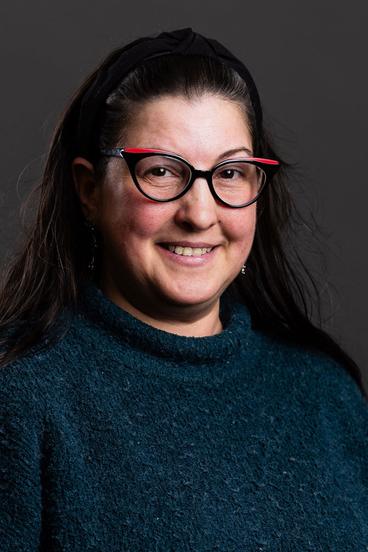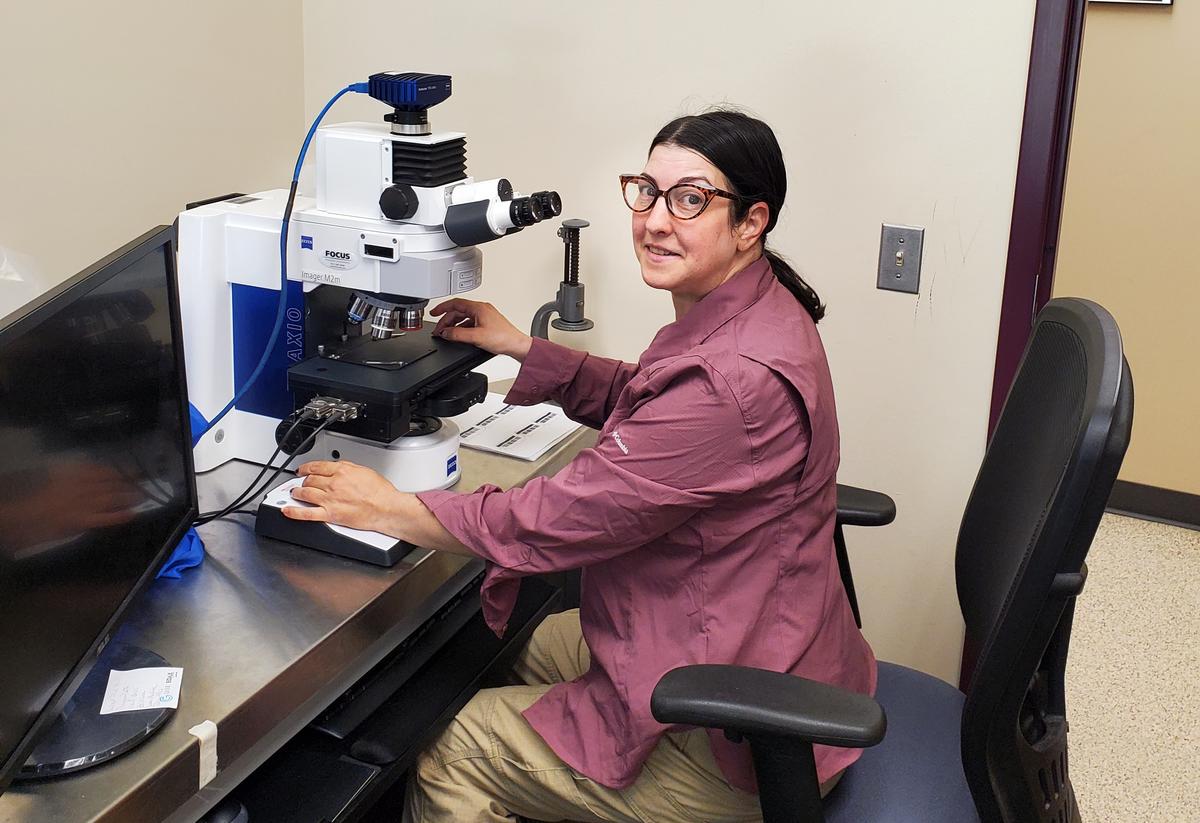Geeking out over cool new tools is just one perk of her job. Another is breaking out of her comfort zone in the rocks and minerals world to forests and biomass.
Lysa Chizmadia is a process mineralogist at NRRI’s Coleraine lab on the Iron Range. And she’s ready to onboard a new cutting-edge microscope – the only one of its kind in Minnesota – with what she calls “nearly unlimited possibilities.”
The Craic vitrinite imaging system uses reflectance and fluorescence to measure the thermal maturity of coal or biocarbon so that it can be fully characterized. Vitrinite is one of the primary components of coals and most sedimentary kerogens (organic material compressed and heated by geological processes).
And this imaging technology is going to make her research much easier. For example, distinguishing the difference between two similar polymers under a microscope is notoriously difficult, but this instrument defines what bonds are in the polymer, even if they have the same composition, so the researchers can tell them apart.

“This equipment is perfect for NRRI because it will be useful to researchers in various fields, including geology, metallurgy, biomaterials, forestry, and more,” said Chizmadia. “And a better understanding of surface chemistry can lead to more efficient processing, saving water or saving energy.”
Chizmadia came to NRRI in September 2022, fresh off a gig as a geology professor at Bemidji State University in northern Minnesota. She also taught at the University of Puerto Rico for 11 years. She holds a master’s degree in geochemistry from the University of California Los Angeles (UCLA) and a doctorate in Earth & Planetary Sciences from the University of New Mexico.
“As a professor, I oversaw research for undergraduate and graduate students, so research is not new to me,” she said. “But now I have more uninterrupted time and don’t have to grade papers all the time.”
Minerals to Biomass
So while she’s gearing up to microscopically dig into complex iron- and manganese-rich ores, Chizmadia is also turning her attention to the world of wood.
NRRI received Department of Energy funding to develop biomass-based carbon fuels to reduce carbon dioxide emissions in the iron-making process. Chizmadia is part of the team that will identify the properties the biocarbon needs to replace fossil coal in the process.
“I have experience and expertise with using electron microscopy to characterize complex solid materials,” she said. “But my background is more in inorganic chemistry, so biomass characterization is new to me.”
The biocarbon project is also expanding her work circles within NRRI to forestry researchers, giving her a lot of new things to learn. She also appreciates the administrative support that helped her settle into the University system, writing and submitting grant proposals and dealing with financial paperwork.
“Robin Oberton, Megan Gorder and Julie Christopherson are great administrative assets to helping us get our work done on time and on budget,” added Chizmadia.
Off Hours
When she needs a break from “geeking out” Chizmadia gets on her bike and rides the Mesabi Trail, listening for tree frogs in the spring.
“I didn’t know Minnesota had tree frogs!” she exclaimed. “I thought they were only tropical or subtropical species.”
